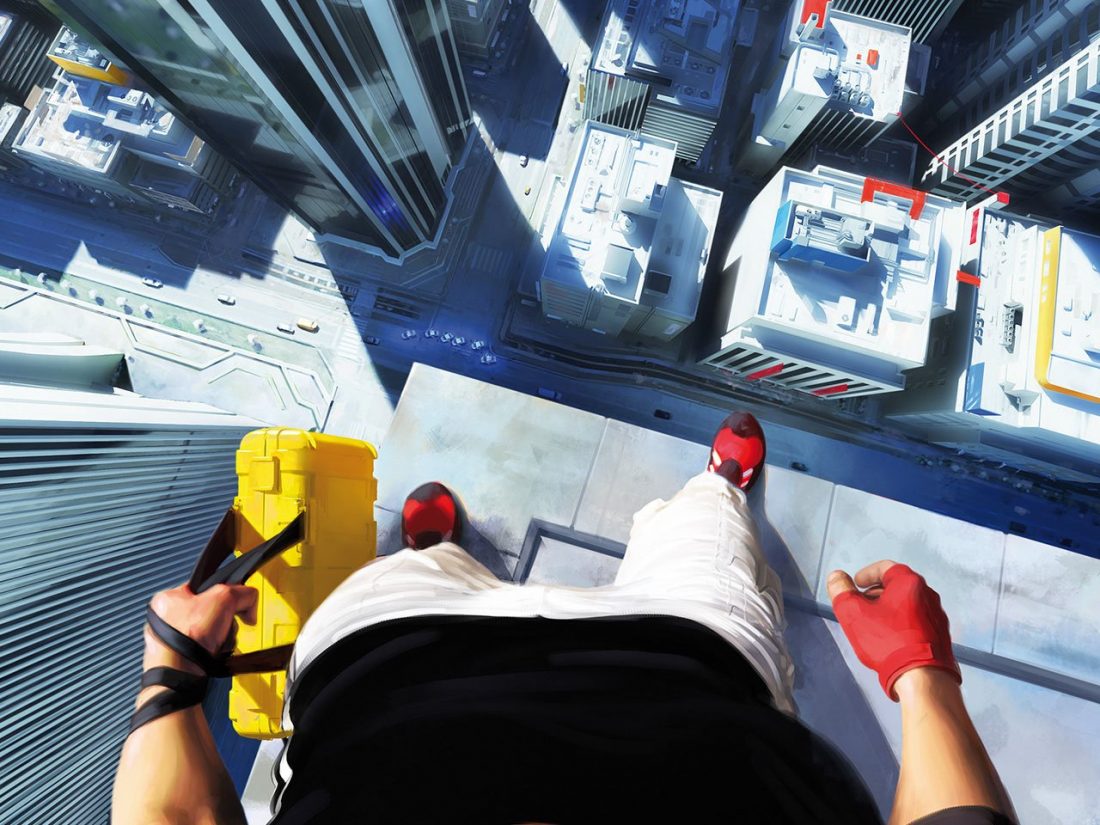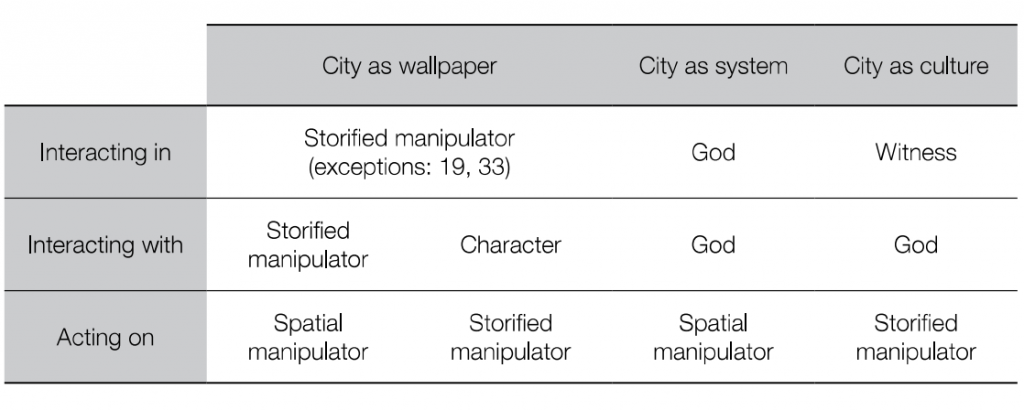
VRBAN: An overview of VR urban spaces and its users
VR technologies seem to be stuck in the role of “the next big thing”. It is often described as one of the most interesting contemporary technological developments and yet its potentials appear to be far from fully exploited. In this book chapter, GG members Mila Bujić and Mattia Thibault explore the current state of VR representations around a specific object: cities.
Cities are the quintessential anthropic space, however, while VR applications represent a wide range of human activities and environments, cities seem to be generally under-represented or used in quite simplistic and shallow ways. This is particularly surprising if we consider the richness of such spaces (aesthetic, morphological, cultural, narrative etc) and the fact that it is at the centre of the technocentric discourse of “smart cities”.
In line with the aim of the book (i.e. investigating the specific forms of meaning-making arising from extended reality technologies), this chapter systematizes and problematise the existing approaches to urban representations in virtual reality. To do so, the authors engaged a total of 37 applications, containing a wide array of both games and non-game apps, that featured VR representations and analysed them focusing on the different kinds of urban representations (what aspects of the city they incorporate and what forms of interaction they host and on the different kinds of users (the ways they are represented and the degrees of the agency that they have).
A typology for virtual cities
The first analysis focused on the semiotic attributes of urban representations and in particular on their modelling strategy – that is, the rationale behind what aspects of the city are selected to be represented – and the degrees of interaction – in what measure the represented urban spaces are reactive to the users’ actions.
The sample featured three different modelling strategies, in particular:
– The city as a wallpaper: the city is a mere background and the application is not interested in the complexity of the urban spaces.
– The city as a system: represent the city as a net of relations, values and resources.
– The city as a culture: use the representation of the city to refer to something else: shared cultural values, heritage, new possible social spaces and so on.
The different degrees of interaction were also grouped around three polarities:
– Interacting in the city: it is possible to move within the city and to look around, but not to interact with the city itself.
– Interacting with the city: the city responds to the users’ actions allowing complex paths on its buildings or providing new information about its elements when the users engage them.
– Acting on the city. The city is created, modified or reshaped by the users.
Who are you in those virtual cities?
Different (re)presentations of users were categorized based on three gradating binaries of their characteristics. One, you are either an agent or an observer, or either having influence in and on the world or not; two, the interaction can be mediated by either embodied or disembodied presentations, depending on whether the user/character is presented at all in the VR world; and three, whether a representation is diegetic or extradiegetic, or in other words whether it is congruent with the VR environment or not. Five categories of representations emerged when coding the collected VR application’s user representations using the lens of the suggested binaries: Witness, God, Spatial Manipulator, and Storified Manipulator.
How does it all fit together?
When combining the findings on urban and user representations, clear patterns and trends emerged, as summarized in the table below.
The table outlines some clear correlations between the types of avatar implemented and how cities are represented. In most cases (seven out of nine), each specific representation corresponds to only one type of avatar used in all the titles; in the other cases, the avatars implemented are similar to each other nonetheless. Other trends involved include the fact that applications that offer the most elaborate experiences tend to give more importance to the representation of the subject and that non-game titles make use of disembodied agents, while all the games, with the exception of the Simulation ones, use embodied agents.

Overall, the scoping of the current situation on urban representations in VR indicates a quite shallow use of the technology and of the semiotic potentials of the objects represented. The vast majority of urban representations in VR scoped seem to follow some unwritten patterns in design oriented towards economy: they often attempt to simply convey the “idea” of a VR representation, through the minimum viable product, without engaging with the potential of the medium.
One of the most prominent examples of this trend is in tourism-related apps: they have the ambition to offer a complex representation of cultural heritage (city as culture) but then they all rely on the simplest forms of interaction (interacting in the city) and relegate the users in the role of witnesses. Users, then, are only able to survey their surroundings, moving through a space that is deserted and still. Such cases point out also to further implications on the broader issue of the relation of heritage and “visitors” and on the “musealisation” of urban heritage and its possible consequences.
Future research
In the future, producers and developers can use analyses such as this one both as inspiration and implied guidelines, depending on their intended audience and aims of the application. It is safe to assume that, as VR production becomes more efficient and resource-light, the representations of the urban environments, as well as its users, will mature into much richer content. The literature on the implications of game avatars and representations in different simulation and education materials can further inform this corner of the field.
VRBAN: Strategies of Representation and Degrees of Freedom in Virtual Cities
Reference: Thibault, M. & Bujić, M. (2020). VRBAN: Strategies of Representation and Degrees of Freedom in Virtual Cities. In F. Biggio, V. Dos Santos and G. Giuliana Meaning-Making in Extended Reality. I saggi di Lexia, Rome: Aracne.
See the following for full details:
Book: Meaning-Making in Extended Reality
Abstract
Smart Cities and Virtual Reality technologies are at the centre of many scientific and political discourses and are generally presented as among the major technological innovations of our time. This chapter aims to investigate the relationship between cities and VR and, in particular, how urban spaces are represented through VR technologies. This chapter, hence, presents an overview of the VR representations of urban spaces, both providing an overview of the current state of urban representation in virtual reality contexts and identifying the untapped semiotic and technological potential in building urban VR experiences. To do so, we utilized a scoping method in order to collect a representative depiction of the entire field. A total of 37 applications containing both games and non-game apps were documented and analysed, yielding classification of both the cities therein and the users’ roles relative to them. An interdisciplinary methodology focusing on the semiotics and affordances of the titles analysed, allowed us to create several concepts and typologies to engage VR spaces. Clear trends emerged from the analyses, indicating patterns in the interconnection of the purpose of the application, the presented city, and the presented user or citizen.
However, considering the vast potential of digital environments, and immersive virtual reality in particular, it is dejecting to see that these applications are mostly simplistic and are far from utilizing all of the potential affordances of (digital) cities and of the ever-improving technology. With this potential in mind, we present this study as a starting point for enriching similar applications and several points for consideration depending on its type and purpose. Finally, possible future research directions that would delve deeper in different segments of the field are briefly noted.




Sorry, the comment form is closed at this time.